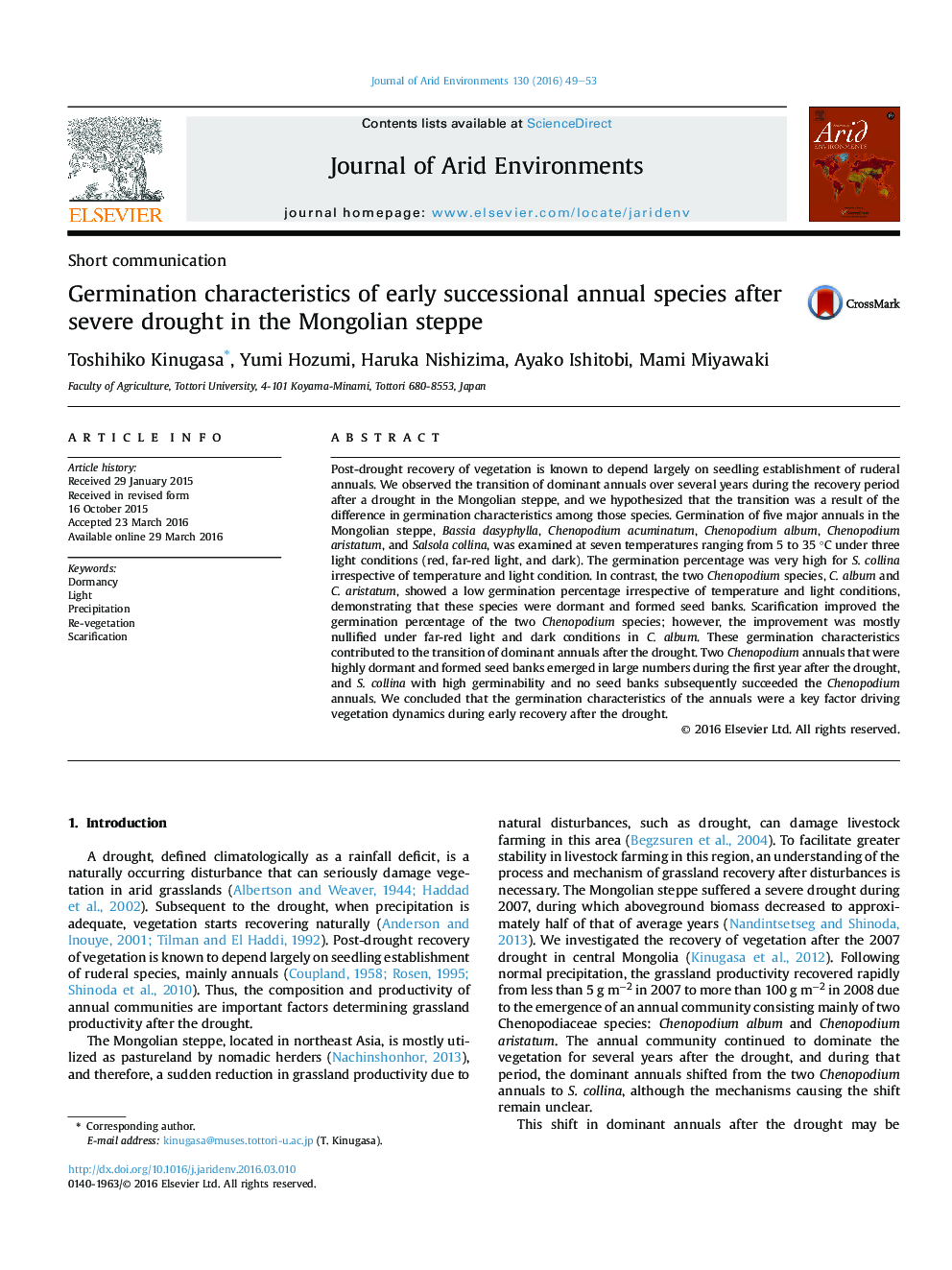| Article ID | Journal | Published Year | Pages | File Type |
|---|---|---|---|---|
| 4392695 | Journal of Arid Environments | 2016 | 5 Pages |
•Germination was tested for five major annuals in the Mongolian steppe.•Salsola collina was highly germinable irrespective of light environments.•Two Chenopodium species showed low germination, indicating they are highly dormant.•Germinability difference influenced species composition shift in drought recovery.
Post-drought recovery of vegetation is known to depend largely on seedling establishment of ruderal annuals. We observed the transition of dominant annuals over several years during the recovery period after a drought in the Mongolian steppe, and we hypothesized that the transition was a result of the difference in germination characteristics among those species. Germination of five major annuals in the Mongolian steppe, Bassia dasyphylla, Chenopodium acuminatum, Chenopodium album, Chenopodium aristatum, and Salsola collina, was examined at seven temperatures ranging from 5 to 35 °C under three light conditions (red, far-red light, and dark). The germination percentage was very high for S. collina irrespective of temperature and light condition. In contrast, the two Chenopodium species, C. album and C. aristatum, showed a low germination percentage irrespective of temperature and light conditions, demonstrating that these species were dormant and formed seed banks. Scarification improved the germination percentage of the two Chenopodium species; however, the improvement was mostly nullified under far-red light and dark conditions in C. album. These germination characteristics contributed to the transition of dominant annuals after the drought. Two Chenopodium annuals that were highly dormant and formed seed banks emerged in large numbers during the first year after the drought, and S. collina with high germinability and no seed banks subsequently succeeded the Chenopodium annuals. We concluded that the germination characteristics of the annuals were a key factor driving vegetation dynamics during early recovery after the drought.
